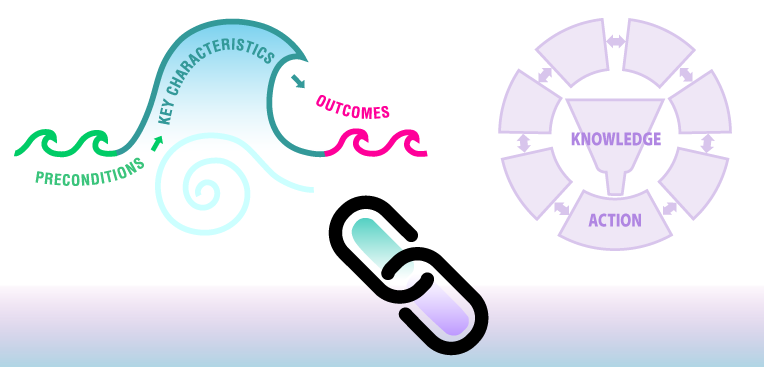

Linking this phase to the elements of the Social Movement Action Framework
You and your change team’s capacity in the ‘Adapt knowledge to local context’ phase may be enhanced and/or accelerated by the addition of some of the elements of the Social Movement Action (SMA) Framework, as the two frameworks are complementary. In addition to the linking example described earlier in this section, there can be many other points of connection between the two frameworks. Below are two more examples for your consideration:
- Receptivity to change: As part of the assessment of the local context, the change team can also determine the level of support for the identified problem or shared concern by stakeholders, and their willingness to take action for it. When the shared concern is seen as credible and valued, it indicates a high level of commitment to the cause and a readiness to take action that enables the local context for change.
- Networks: When assessing the local context, stakeholders and resources, it will be important to determine these three elements in the context of networks. Networks can help you determine which contexts and stakeholders are accessible for you to implement your change.
For more discussion about the dynamic links between the elements of the SMA Framework to the KTA Framework, see the section ‘Accelerate your success with the Leading Change Toolkit™’.
Getting Ready for Next Phase: Once you have assessed the local context, and you and your change team have decided to go forward with the practice change, you are now ready to assess the barriers and facilitators in your practice setting. This upcoming phase can help you and your change team to identify the barriers you can address and facilitators you can leverage. Assessing the barriers and facilitators can help you maximize your chances of successfully implementing the practice change or intervention in your local setting.
